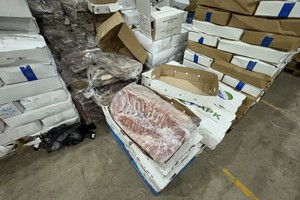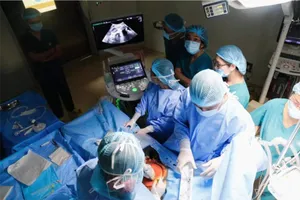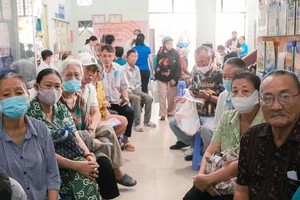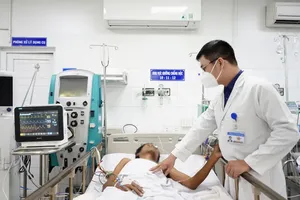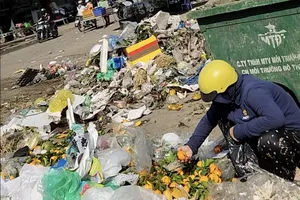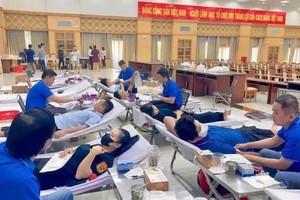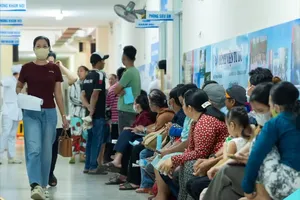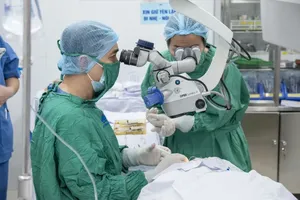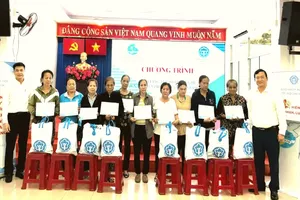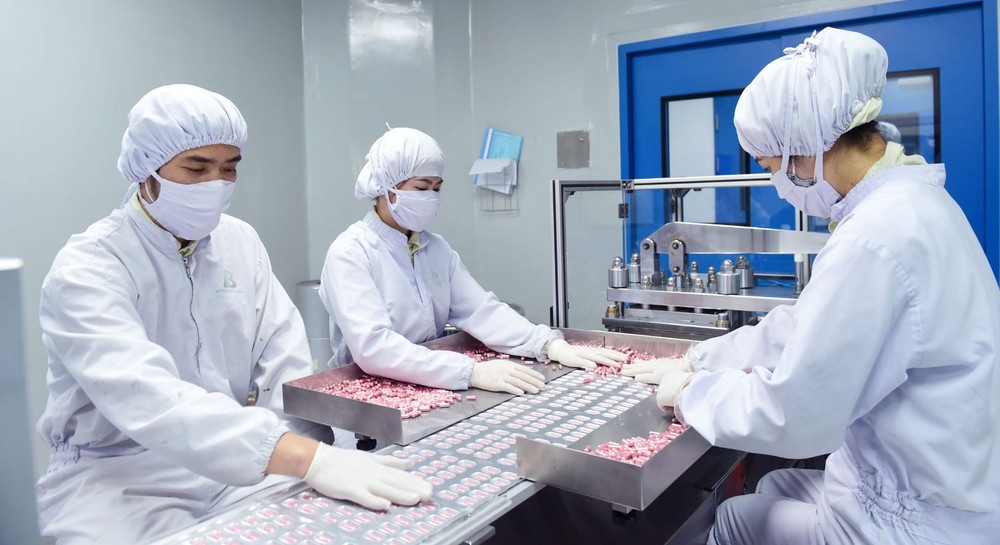
 |
Employees of a pharmaceutical company are packing finished medicines. (Photo: SGGP) |
In recent years, Vietnam's pharmaceutical industry has seen drastic changes thanks to large investments from domestic and foreign enterprises. Despite being considered to have many development opportunities, the pharmaceutical industry faces many challenges when raw materials are dependent on foreign sources. In addition, the research and development of patent medicines are still limited and can only produce generic drugs, making the pharmaceutical industry unable to thrive.
Domestic pharmaceutical enterprises have produced many types of medicines to serve the health care and protection needs of people, but the product value and gray matter content are not high.
At the beginning of 2022, when the Covid-19 pandemic remained relatively complicated, and the demand for medicines for Covid-19 treatment increased, the Ministry of Health decided to grant circulation registration of three types of drugs containing Molnupiravir produced domestically for three enterprises, namely Boston Vietnam Pharmaceutical Joint Stock Company, Mekophar Pharmaceutical Chemical Joint Stock Company, and Stellapharm Joint Venture Company Limited - Branch No.1. The fact that these enterprises are authorized and licensed to manufacture drugs containing Molnupiravir is a step forward of the Vietnamese pharmaceutical industry because it is a new medicine of the world that is still in the process of research and testing. Despite being manufactured in Vietnam, all raw materials for making Molnupiravir must be imported from India. Therefore, even though it is a new product of domestic enterprises, the actual value is not high.
At the same time, the Institute of Marine Biochemistry under the Vietnam Academy of Science and Technology successfully researched and announced the creation of a pilot-scale synthesis and purification of Molnupiravir. However, up to now, Molnupiravir still has to be imported and cannot be produced domestically even though the Institute of Marine Biochemistry has signed a contract to transfer the pilot-scale Molnupiravir production process to a pharmaceutical company, with the desire to quickly have Molnupiravir made by Vietnam.
Meanwhile, the Institute of Chemistry successfully synthesized Nitazoxanide compounds on a pilot scale for making medicines to treat Covid-19 in mild and moderate forms. Prof.-Dr. Nguyen Van Tuyen, Director of the Institute of Chemistry, said that the synthesis process of Nitazoxanide achieved high efficiency through only two reaction steps from inexpensive raw materials. It is a generic drug for oral use with low cost, safe, and suitable for production in Vietnam. Therefore, the institute signed a contract principle to transfer technology to an enterprise and proposed a clinical trial of the low-cost Nitazoxanide to treat mild and moderate Covid-19 patients at home.
Many made-in-Vietnam Covid-19 treatment products had built a laboratory-scale synthesis process and even successfully researched the pre-clinical stage of experimental medicines to treat Covid-19 from herbs. However, the research results remain at the laboratory scale and have not been tested in practice.
Dependence on imported raw materials
Recognizing the reality of Vietnam's pharmaceutical industry, Mr. Ta Manh Hung, Deputy Director of the Drug Administration of Vietnam under the Ministry of Health, assessed that one of the challenges that make Vietnam's pharmaceutical industry unable to develop robustly is the source of raw materials. Currently, more than 90 percent of pharmaceutical materials, including active ingredients and excipients, in Vietnam are imported, mainly from China and India. There are a few units that can produce raw materials to create pharmaceuticals, a few excipients, inorganic chemical raw materials, herbal extracts, Terpin, DEP, Taurine, Berberin, and Curcumin.
Even Hau Giang Pharmaceutical Joint Stock Company - the leading enterprise in the pharmaceutical market in Vietnam, accounting for 14 percent of the market share of domestically produced medicines, must also import 80 percent of raw materials from abroad; or Imexpharm Joint Stock Company must import 50 percent of raw materials. According to a survey by Vietnam Report - a leading company in reporting, assessing, and ranking enterprises, 90 percent of pharmaceutical enterprises in Vietnam depend on imported raw materials - it is one of the biggest barriers currently. The dependence on imported raw materials makes the pharmaceutical industry vulnerable to external factors, such as exchange rate fluctuations or supply shocks. In addition, importing raw materials results in high input costs, causing production costs to increase. In fact, medicine cost prices in Vietnam are 20-25 percent higher than those in China and India.
On the other hand, when dependent on imported drugs, Vietnam's pharmaceutical industry will fall into turmoil in case the supply chain of raw materials and medicines from other countries is broken. For example, recently, the Hanoi Central Odonto-Stomatology Hospital faced a shortage of dental anesthetics, which has to be imported from France and Canada. Previously, Vietnam was also in short supply of Dextran 40 or Dextran 70 infusions in treating patients with dengue shock. This is a drug that Vietnam has not been able to produce, and the import of this drug has faced many difficulties due to the interruption of supply from Thailand.
According to the Drug Administration of Vietnam, at present, domestic medicine production still has some limitations. For instance, enterprises have neither researched to produce raw materials with domestic medicinal herbs nor extract pure active ingredients, mainly raw pharmaceutical materials or extracts. Medicine manufacturing establishments mainly invest in production lines for simple dosage forms and do not invest in and apply technology to produce modern dosage forms. The investment is also overlapping, producing low-value drugs. Production lines are primitive, mainly focusing on common medicines and copycatting designs.
According to statistics from the National Institute of Medicinal Materials, Vietnam currently records 5,117 species of plants and fungi, 408 species of animals, and 75 kinds of minerals with medicinal uses, including many rare and precious medicinal species. However, despite the great potential and high demand, the pharmaceutical industry has not developed properly. In particular, the processing stage is still inadequate, and many precious medicinal herbs are in danger of being exhausted. In addition, the cultivation and exploitation of medicinal herbs are still spontaneous and on a small scale, leading to unstable output and volatile prices. Many types of medicinal herbs are grown without the process and planning, causing the quality to be reduced. Overexploitation puts many medicinal species at risk of disappearing.
